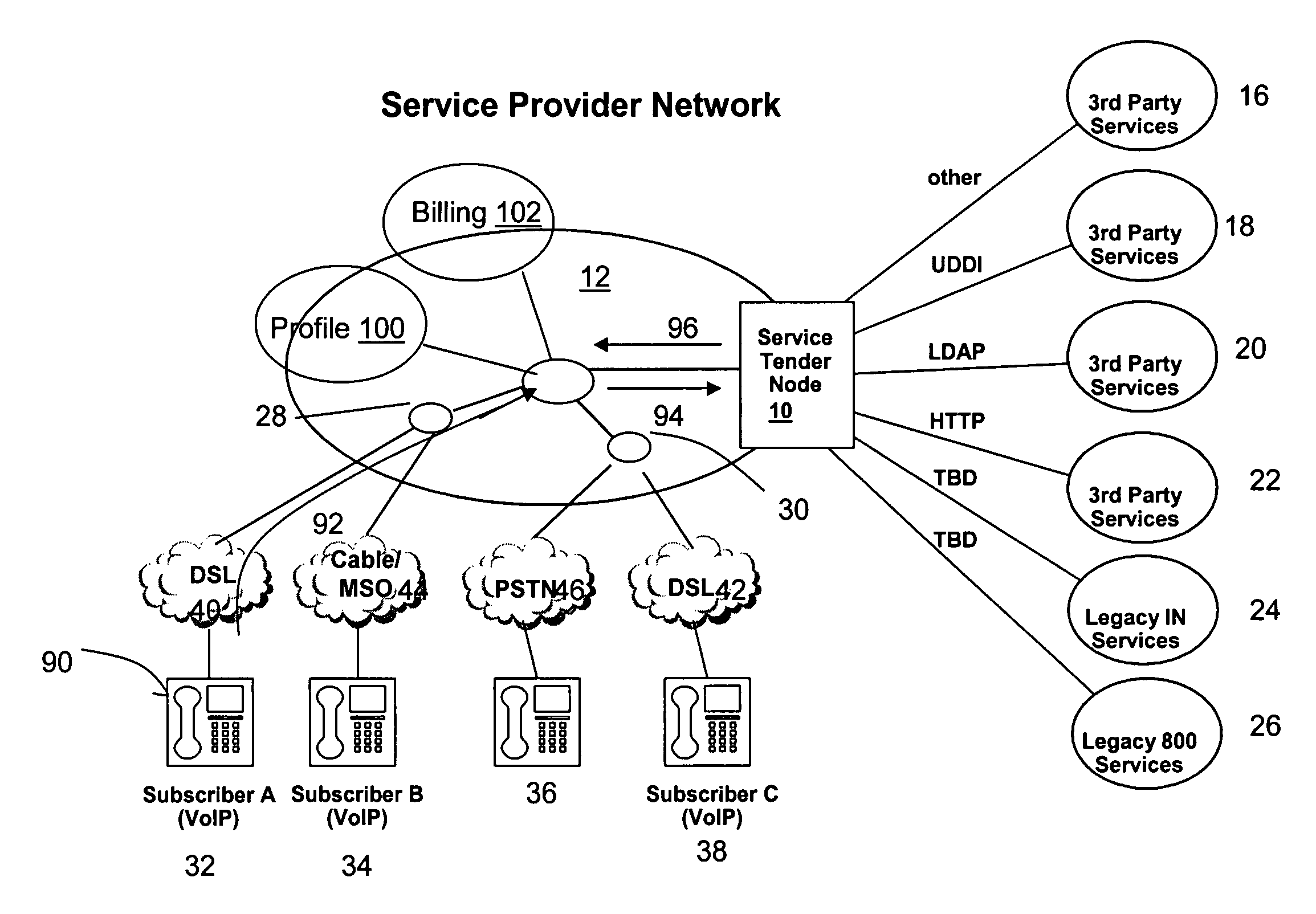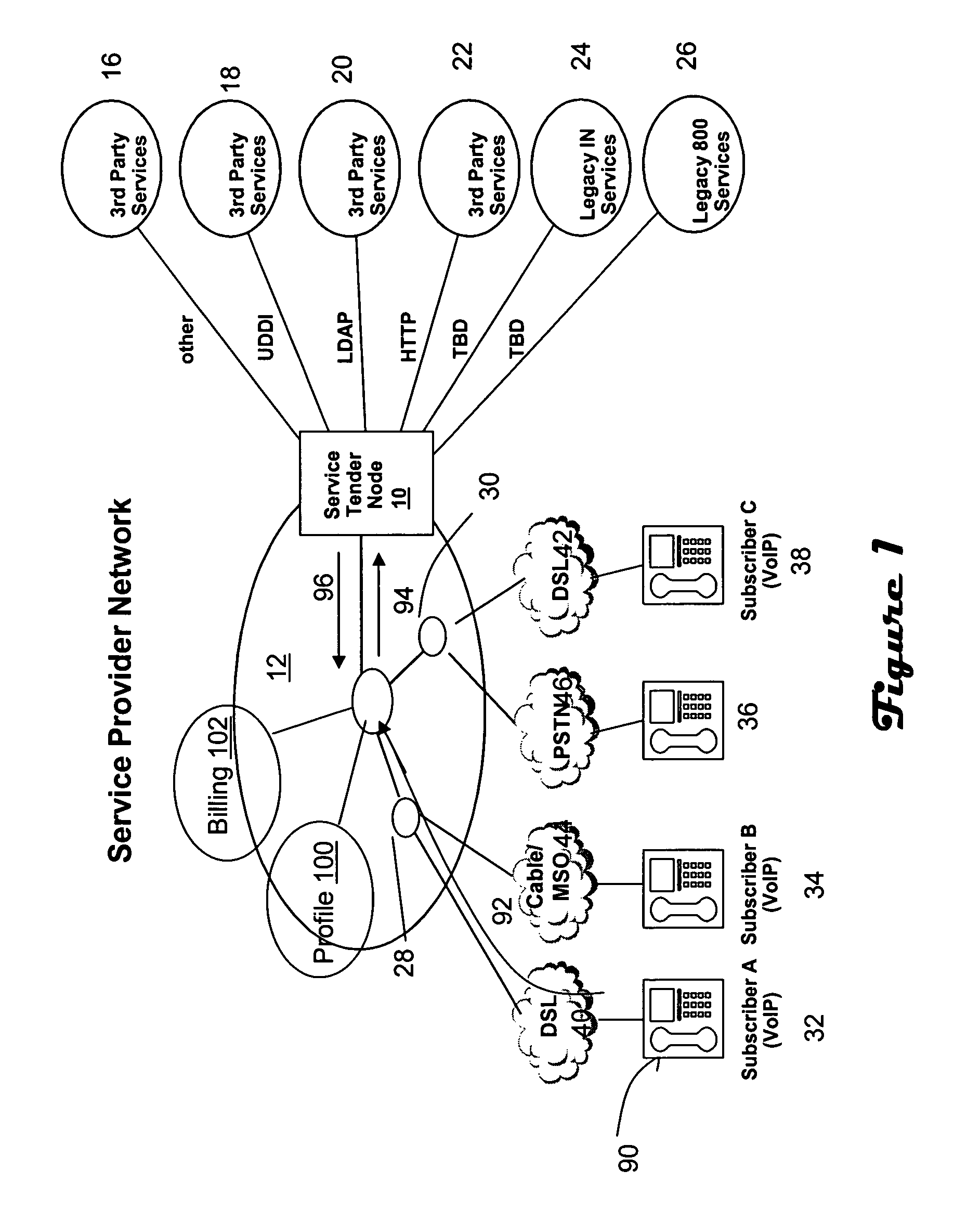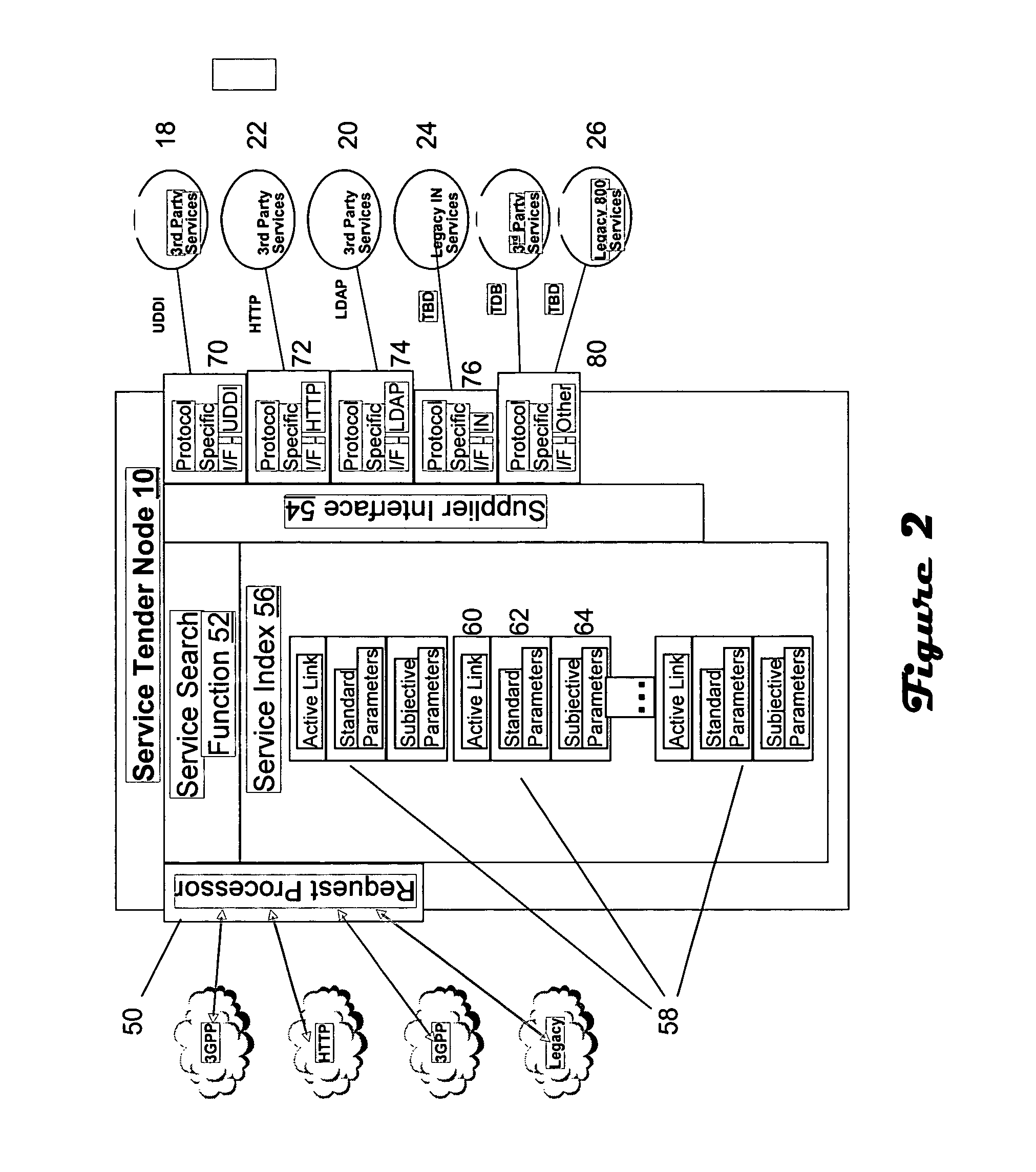Telecommunications service negotiation
a technology for negotiating services and telecommunications, applied in the field of telecommunications services, can solve the problems of increasing the overall cost of providing services, increasing the possibility of generating revenue through reuse, increasing the cost of platform migration, etc., and achieving the effect of enhancing the economic viability of services, and increasing the number of services
- Summary
- Abstract
- Description
- Claims
- Application Information
AI Technical Summary
Benefits of technology
Problems solved by technology
Method used
Image
Examples
Embodiment Construction
[0013]FIG. 1 illustrates a network architecture for facilitating service negotiation. A service tender node 10 is located in a service provider network 12, logically disposed between a network based service control node, such as a Serving Call Session Control Function (“S-CSCF”) 14 and devices for providing telecommunications services 16, 18, 20, 22, 24, 26. The devices for providing services include both devices which may be owned and operated by the service provider, such as legacy IN services 24 and legacy 800 services 26, and devices owned and operated by third parties 16, 18, 20, 22. The S-CSCF 14 is in communication with a plurality of Proxy CSCF (P-CSCF) interfaces 28, 30, which in-turn are in communication with subscriber devices 32, 34, 36, 38 via access networks such as Digital Subscriber Line (“DSL”) networks 40, 42, cable networks 44 and the Public Switched Telephone Network (“PSTN”) 46. The S-CSCF and P-CSCF comprise software modules which are operative to facilitate se...
PUM
 Login to View More
Login to View More Abstract
Description
Claims
Application Information
 Login to View More
Login to View More - R&D
- Intellectual Property
- Life Sciences
- Materials
- Tech Scout
- Unparalleled Data Quality
- Higher Quality Content
- 60% Fewer Hallucinations
Browse by: Latest US Patents, China's latest patents, Technical Efficacy Thesaurus, Application Domain, Technology Topic, Popular Technical Reports.
© 2025 PatSnap. All rights reserved.Legal|Privacy policy|Modern Slavery Act Transparency Statement|Sitemap|About US| Contact US: help@patsnap.com



